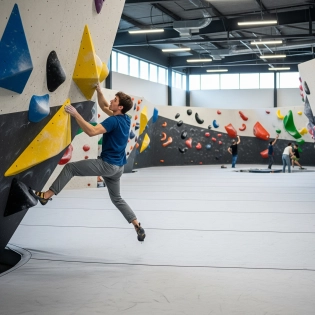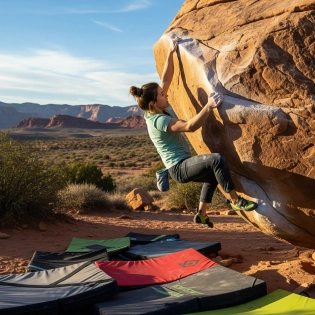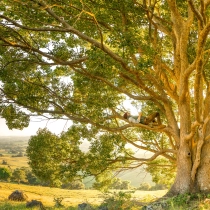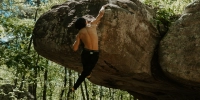
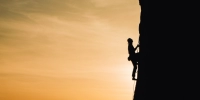






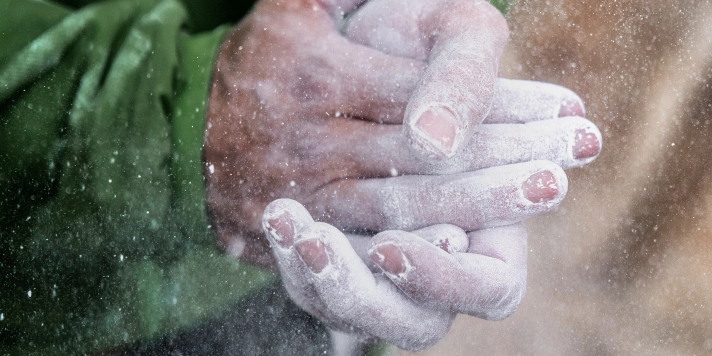
general climbing
Adam Ondra is the one most consider as the best climber in the world.
He started climbing when he was just 3 years old, and onsighted a 7b+ when he was just 8 years old.
His climbing future was just as bright, and at that early age became one of the top names in the climbing community.
Over the course of less than 20 years, he has climbed over 1550 routes that are graded 8a and above, including the world's first ever proposed 9c. Out of those routes, he has onsighted over 720 of them.
He has had enormous success in climbing competitions, and has even competed in the first ever Olympic climbing event. Though he came in at 6th place and did not take home a gold medal, he is still considered to most people as the best climber in the world.
This question has been debated a lot, and will continue to be debated, as there are many other climbers that people consider to be the best, but by far Adam Ondra is the one the majority see as the best in the sport.
There is no definitive amount of times someone can climb per week. It just depends on each person, as each person has their own fitness level and athletic history.
When I started climbing, I climbed around 4 times per week, each session was 4-5 hours long. Needless to say, I injured myself. I toned it down a lot to just 2-3 times per week at most, and also took some time off here and there to give my injuries and muscles more time to recover.
After this, I create a better schedule of climbing 2-3 times per week, for around 2-3 hours each time. I came from a background of weight training for quite a few years. This did help with my climbing as I was able to pretty quickly progress to v6, but, I did overdo it in the beginning. With my new schedule, I was injury free and haven't been injured since.
So even if you have background in something, or you are generally fit, you can still very easily overdo it. Climbing is different from most sports, it uses your muscles differently, so it is just very easy to overdo it.
The best way to know how often you should climb per week is to just listen to your body, pay attention to it, and don't ignore the signs. If you do, the next time you get another sign may be too late.
If the blister is not that big, then I just put a band-aid on it and wrap it in tape so the band-aid stays in place, and that's it. If the blister is big and not popped, I usually wait a day or two before climbing.
I prefer to not pop blisters, so I just usually wait until it either pops anyway, or until it goes down in size to the point where I can climb with it. During those days I would normally do some weight training.
If you have ever played a strategy game in which you need to level up, then you can understand how the difficulty works with climbing as you progress.
In strategy games, it is very easy to level up in the beginning, you can usually go up quite a few levels very quickly, but, as you go up in levels, the difficulty between each level increases. By the time you get to what is considered a high level for the game, going up even a single level can take a long time.
The same applies to climbing. In the beginning, new climbers would start climbing v0, which would be considered the easiest grade, but, they would very quickly also be able to climb v1, v2, and even go up to v3 and v4. But, as they go up in the grades, it will be harder and harder to get to the next ones. Beginners may be able to climb some v4s in their first session, but the difference between v8 and v9 is quite huge and will take a lot more time to make the progression, and the difference gets larger and larger as the grades go up.
Think about the fact that the hardest and highest graded route at the time of writing this is a proposed v17. Proposed means that it is not for sure a v17, but the climber who climbed it believes it to be. 17 is not a very high number in general, and not much higher than 10, but the differences between a v10 route and a v17 route are pretty unimaginable for someone who is a v10 climber.
Rock climbers shake their arms as a way of recovering during a route or in between routes. The purpose of this is to reduce the lactic acid build up in their forearms, which is referred to as being pumped.
There is quite a bit of controversy over the effectiveness of shaking your arms to help recover as there doesn't seem to be a definitive answer regarding if it actually works, and how. Many believe that it is better to shake your arms while they are above your heart or head, while many believe that it is better to do it when your arms are down beside you. Some also believe that shaking your arms doesn't have any effect at all, regardless of where or how you shake them.
Many climbers use a combination of the two methods, they shake their arms above their heads, and below, to their sides.
Some also believe that the effects of shaking your arms are mainly psychological, and that they don't have any physical effect or benefit.
Rock climbing is relatively easy for beginners since the beginner routes are usually not complex, and actually resemble climbing a ladder. As the grades go up, so does the complexity and the difficulty of the routes.
Beginner rock climbers can usually climb a few grades up from the easiest one, even if it's their first time climbing. For example, one grading system for bouldering is v0, v1, v2... As you go up in the number, the climbing gets harder, new holds are introduced that are harder to grip and use, climbing moves become bigger and more difficult, and the route itself becomes more complex.
Many times, beginner rock climbers and even those who it's their first time climbing can climb between v0 and v3. Some can even go up to v4 and v5, though, this depends on the climbing gym, and the climber. If the climber is in good shape and has prior experience in sports that could contribute to climbing, they could very quickly go up to climbing harder routes.
As you go up the grades, the difficulty between each grade also goes up.
Taping up blisters can seriously help ease the pain and discomfort they cause. Though, keep in mind that if the tape is very sticky, it could rip the blister off when you take the tape off, so add a thin layer in between, just to not have the sticky parts on the actual blister. A band-aid is a good option for this, just put a band-aid over the blister, and then tape over the band-aid.
Many climbers also pop the blister, and then put a band-aid or tape over it. Though this may not be the healthiest option, but for some it is the most practical because it is quite uncomfortable climbing with blisters, even when they are taped up, and they may pop while climbing anyway.
The amount of times you should climb per week really depends on you and how conditioned your body is to climbing. If you have been climbing for a few years, and you are generally healthy, you may be fine climbing 4 times per week or even more. If you are a new climber, climbing 3 times may be your limit before you start experiencing slight or major injuries, and you may even be able to climb only twice a week.
In the end, the amount of times you can climb per week really depends on you. If you come from a background in sports, and you are a new climber, then maybe you can even push it and go for 3-4 sessions per week, but this is considered risking it because climbing generally uses very specific muscles that most people, even those coming from other sports background, are not used to, and if you overuse these muscles and don't give them the adequate amount of rest, you could just be risking injuries.
The best way to find out is to just experiment. Try going twice a week while having a rest day or two in between, if you are ok with this, try adding another day in, and just keep experimenting with the amount of climbing days and the amount of rest days in between.
Very often, climbers can experience weak days. These are days that they just feel as if they have no power and no energy to climb at the level they normally can. This is not unique to climbing, or to sports in general. It's just part of being human.
Some people feel this way due to fatigue, they may be pushing their body too much and not giving it the amount of rest it needs. This can cause you to just feel very sluggish and weak, resulting in a weak climbing day when you just don't have the energy to climb, or don't have the power to do moves you normally would be able to.
Distractions are also very common. People who are distracted by something and who are not focused on the climbing session can very easily feel this in their climbing. They will just not be in the zone, not be focused on what they are doing, and this can very easily result in not being able to climb at the level you are used to climbing at.
Some climbers may also face medical issues. Depression, for example, is one that can really affect your climbing, and your whole life in general. If you notice that you are just not able to climb and don't feel the way you normally feel, and this feeling lasts, it is highly advised to go see a specialist as this may be something more serious than just an off day.
Having weak climbing days can also be a result of your eating habits. Some people feel very weak and shaky if they don't eat a little bit before their climbing session. Others, on the other hand, may feel the opposite, and eating even a small meal an hour before their climbing session could make them just feel heavy and tired.
You could try remembering or writing down each time this happens and how you were feeling, or what you ate before, or any other important details you may have, and then to try and find a common element shared by these days. This could be a great way to find the cause, and eventually, a solution.

